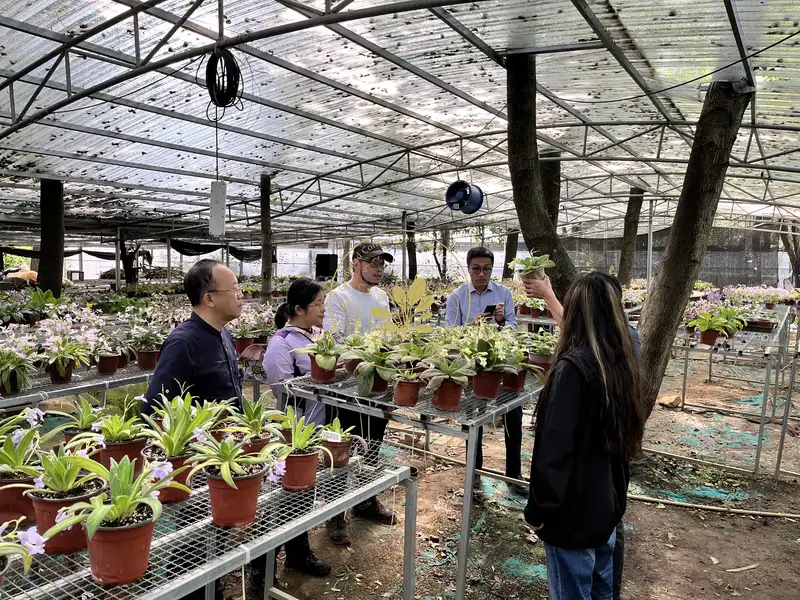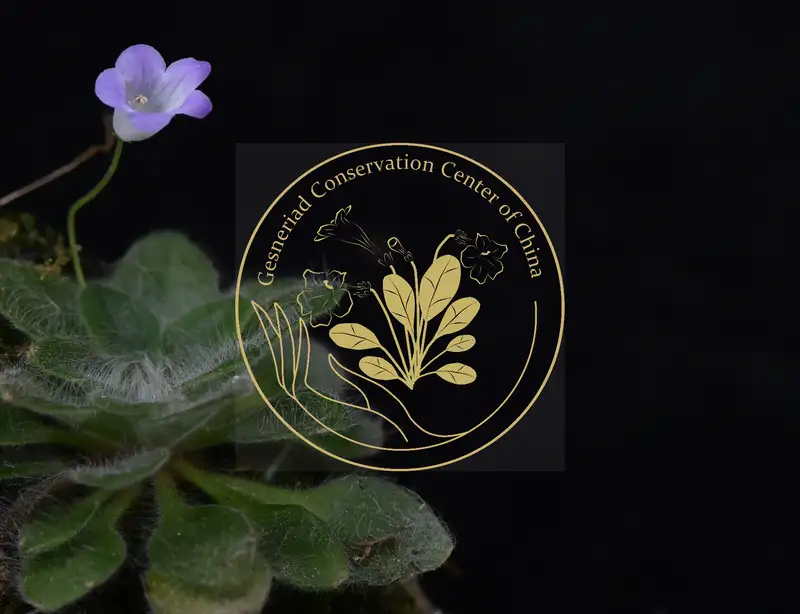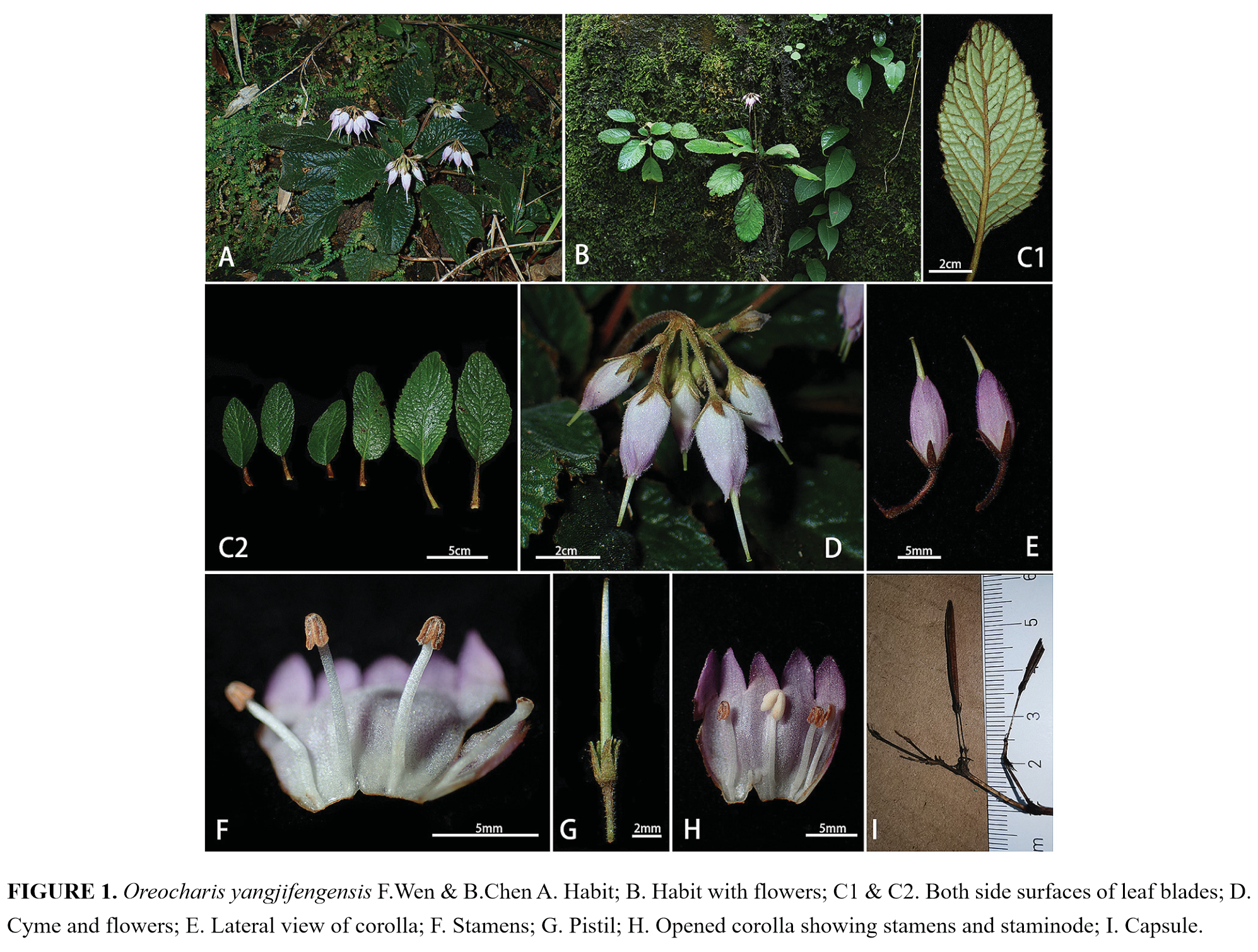No.24 Wei‑Bin Xu, Hsuan Chang, Jie Huang & Kuo‑Fang Chung
Molecular systematics of Chiritopsis-like Primulina (Gesneriaceae): one new species, one new name, two new combinations, and new synonyms
Botanical Studies 2019(60): 18
Abstract
Background: The
Gesneriaceae genus Chiritopsis, confined almost exclusively to cave or cave-like microhabitats
of limestone karsts of southern
Results: With 182 accessions of 165 taxa of Primulina sampled, our analyses placed the 40 accessions of 25 taxa of Chiritopsis-like Primulina in 17 unrelated positions, indicating at least 17 independent origins of the traits associated with caves or cave-like microhabitats. Of the 17 clades containing Chiritopsis-like Primulina, Clade 1 is composed of P. bipinnatifda, P. cangwuensis, P. jianghuaensis, P. lingchuanensis, and P. zhoui, as well as additional samples that show variable and overlapping morphology in leaf shapes. Clade 10 includes P. cordifolia, P. huangii, and P. repanda, while P. repanda var. guilinensis is not placed within Clade 10. Primulina glandulosa var. yangshuoensis is not placed in the same clade of P. glandulosa.
Conclusions: Based on our data, P. cangwuensis, P. jianghuaensis, and P. lingchuanensis are proposed to synonymize under P. bipinnatifda, with P. zhoui treated as a variety of P. bipinnatifda. Primulina repanda var. guilinensis is transferred as P. subulata var. guilinensis comb. nov. and Primulina pseudoglandulosa nom. nov. is proposed for P. glandulosa var. yangshuoensis. One new species is named P. chingipengii to honor the late Dr. Ching-I Peng (1950–2018).
Original link:https://doi.org/10.1186/s40529-019-0266-x
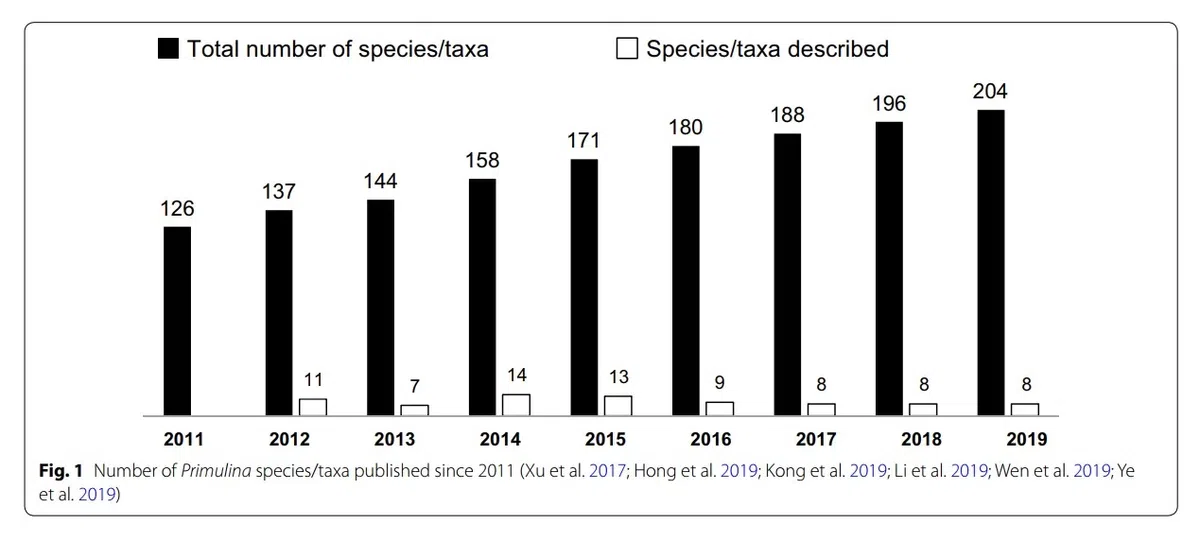
Fig. 1 Number of Primulina species/taxa publishe since 2011 (Xu et al. 2017; Hong et al. 2019; Kong et al. 2019; Li et al. 2019; Wen et al. 2019; Ye et al. 2019)
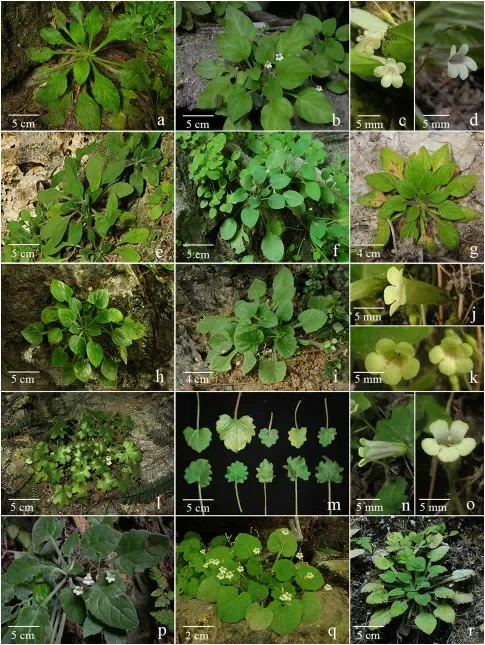
Fig. 2 Primulina repanda (a–g), P. cordifolia (h–k, p–r), and P. huangii (l–o). a–d plants from the type locality of Chiritopsis repanda W.T.Wang (Chung 1821), a, b habit, c flowers (face view), d flower (side view); e plants from Liujiang (Peng 22921); f plants from Rongshui (Chung 1815); g a plant from Tian’e (Chung et al. 1823); h–k plants from the type locality of C. cordifolia W.T.Wang (Chung 1817), h, i habit, j flowers (side view), k flowers (face view); l–o plants from type locality of P. huangii F.Wen & Z.B.Xin, l habit, m variation in leaf shapes, n flower (side view), o flower (face view); p a plant from Bama (Chung et al. 1828); q plants from plants from Rong’an (Chung et al. 1808); r a plant from Donglan (Chung et al. 1826)
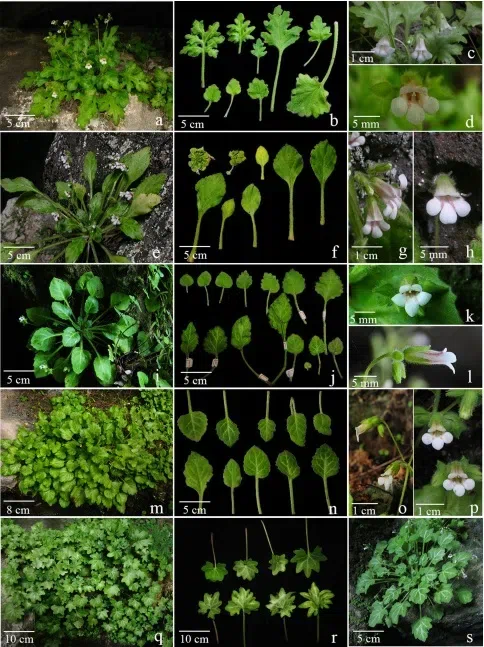
Fig. 3 Primulina bipinnatifda. a–d plants from type locality of Chiritopsis bipinnatifda W.T.Wang (Chung et al. 1863), a habit, b variation in leaf shapes, c flowers (side view), d flower (face view); e–h plants from type locality of C. lingchuanensis Yan Liu & Y.G.Wei (Chung 1802), e habit, f variation in leaf shapes, g flowers (side view), h flowers (face view); i–l plants from type locality of P. jianghuaensis K.M.Liu & X.Z.Cai (Chung 2932), i habit, j variation in leaf shapes, k flower (face view), l flower (side view); m–p plants from type locality of P. cangwuensis X.Hong & F.Wen (Chung 1842), m habit, n variation in leaf shapes, o flowers (side view), p flowers (face view); q, r plants from type locality of P. zhoui F.Wen & Z.B.Xin (F. Wen WF150718-01), q habit, r variation in leaf shapes; s a plant from Lipu (Chung 1852)
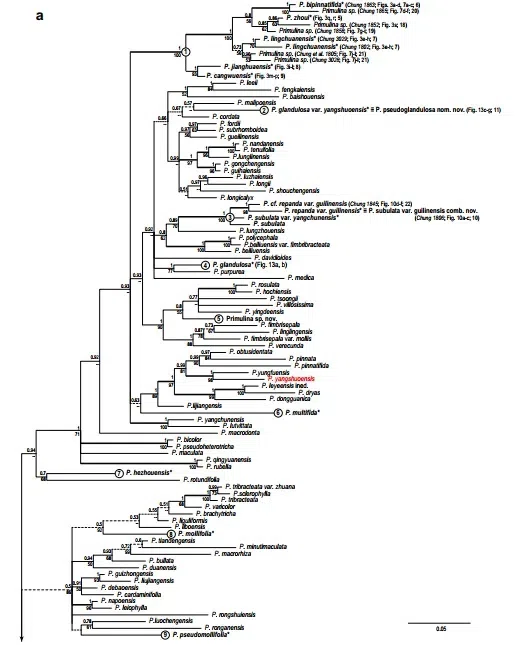
Fig. 4 Bayesian majority-rule consensus tree with mean branch length based on the combined ITS and chloroplast (trnL-F and trnH-psbA) DNA sequences. Bayesian posterior probability (PP; >0.50) and ML bootstrap support values (ML; >50%) are shown above and below the branch around the corresponding node. Thickest clades denote both PP and ML higher than 0.95. Thick clades denote only PP>0.50. Dashed branches denote clades with PP<0.75. Species of Chiritopsis-like Primulina are shown in bold face, with * indicating materials from type locality. Numbered circles denote clades containing Chiritopsis-like Primulina species

Fig. 4 continued
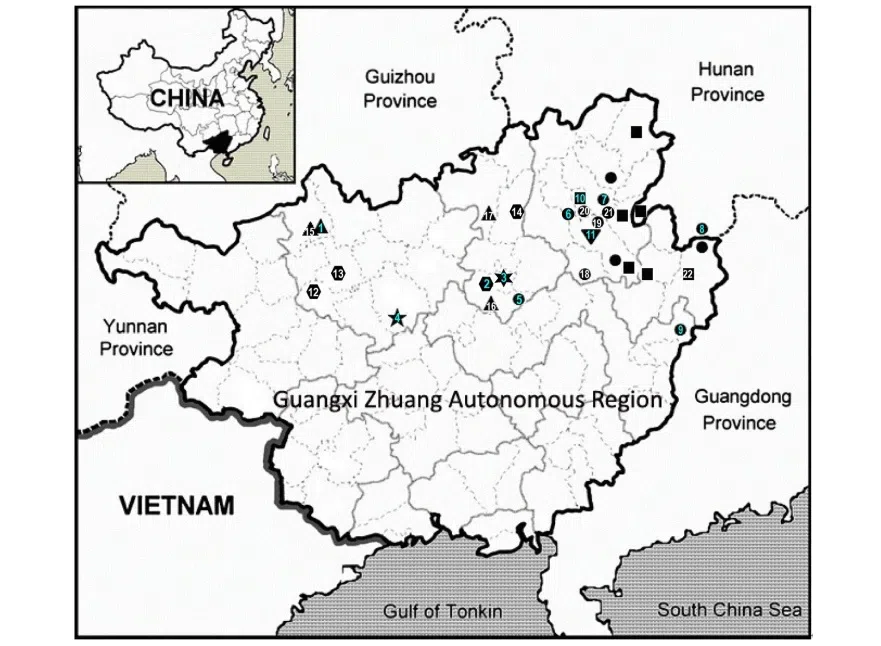
Fig.5 Distribution of Primulina bipinnatifda (black circles),P.chingipengii (black star),P.cordifolia (hexagons), P.huangii (hexagram),P.subulata var.guilinensis (black squares),P.pseudoglandulosa (black down-pointing triangle) and P.repanda (black up-pointing triangles) in Guangxi and Hunan,southern China.The type localities are marked by the light-blue numbers (1–11):1.Chiritopsis repanda; 2.C.cordifolia; 3.P.huangii; 4.P.chingipengii; 5.P.bipinnatifda var. zhoui (≡P. zhoui); 8.P.jianghuaensis; 9.P.cangwuensis; 10.C.repanda var. guilinensis; 11. C. glanduola var. yangshuoensis . Numbers 12 to 22 denote non-type localities sampled for current study: 12: Bama (Chung 1828); 13:Wuzhuang(Chung 1826); 14: Rong’an (Chung 1808); 15:Tian’e (Chung 1823); 16:Liujiang (Peng 22921); 17:Rongshui(Chung 1815); 18:Lipu (Chung 1852); 19:Yangshuo (Chung 1858); 20:Linggui (Chung1865); 21:Lingchuan (Chung 1805 and 3028); 22:Hezhou (Chung 2914)

Fig.6 Holotype of Chiritopsisbipinnatifda W.T.Wang [Lingui Exped.6-1575(GXMI)]
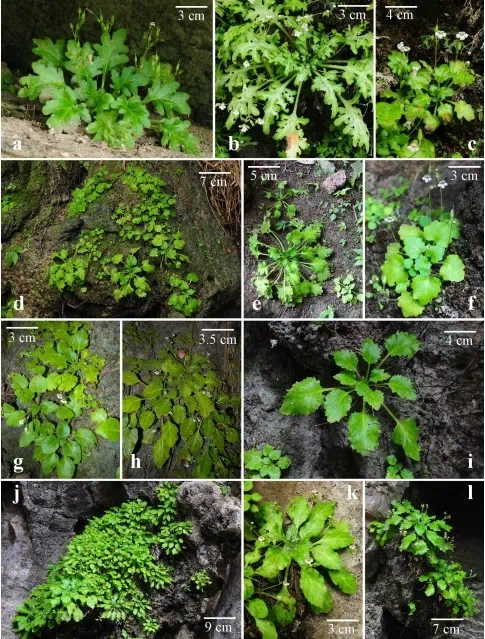
Fig.7 Primulina bipinnatifda (W.T.Wang) Yin Z.Wang & J.M.Li.a–c plants from type locality of Chiritopsis bipinnatifda W.T.Wang (Chung 1863); d–f plants from Linggui (Chung 1865); g–i plants from Yangshuo (Chung 1858); j–l plants from Lingchuan (Chung 1805&3028)
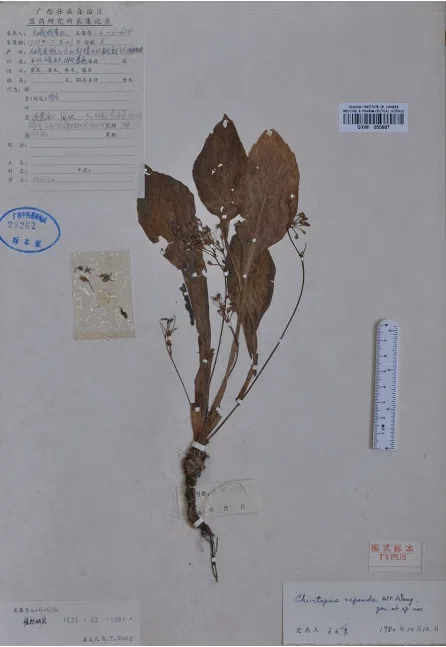
Fig.8 Holotype ofChiritopsisrepanda W.T.Wang [Tian’e Exped.4-6-654(GXMI)]
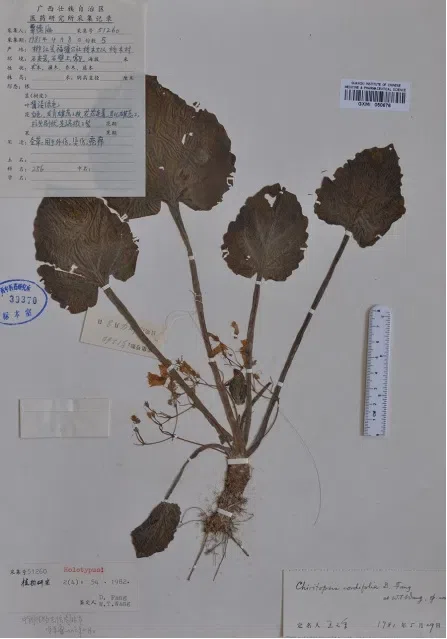
Fig.9 Holotype ofChiritopsiscordifolia D.Fang &W.T.Wang [D.-H.Qin51260(GXMI)]
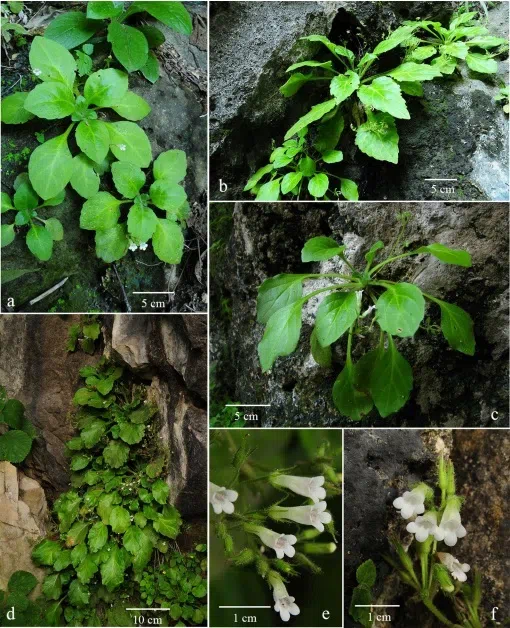
Fig.10
Primulina subulata var. guilinensis (W.T.Wang) W.B.Xu &
K.F.Chung. a–c habit from
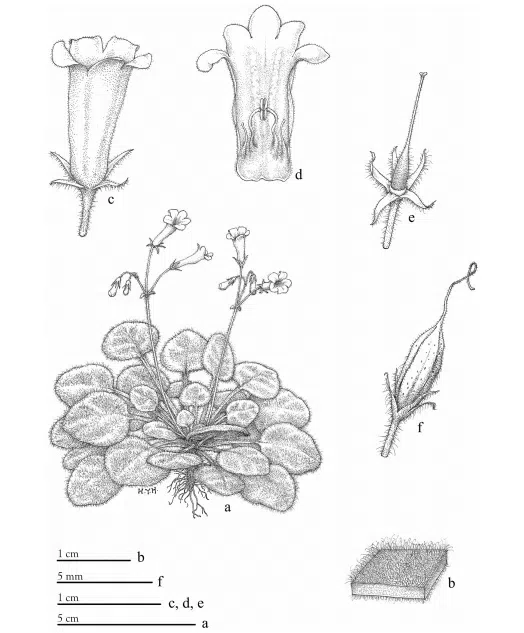
Fig.11 Primulina chingipengii W.B.Xu & K.F.Chung. A habit, b enlarged part of blade, c flower, d corolla opened showing stamens and staminodes, e calyx, pistil and disc, f capsule. (Drawn by Han-Yao Huang based on the holotype)
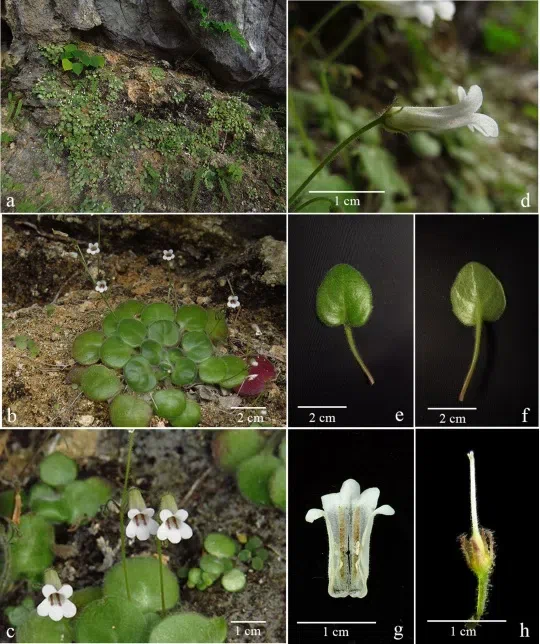
Fig.12 Primulina chingipengii W.B.Xu & K.F.Chung. A habitat, b habit, c flower (face view), d flower (side view), e upper surface of leaf, f lower surface of leaf, g opened corolla showing stamens and staminodes, h pistil and calyx. All taken from type locality (W.-B.Xu et al.13158)

Fig.13 Primulina glandulosa (D.Fang,L.Zeng & D.H.Qin) YinZ.Wang (a,b) and Primulina pseudoglandulosaW.B.Xu & K.F.Chung(c–g).a habit,b inflorescences; c,d habit, e inflorescences, f flowers (side view), g flowers (face view).a,b from type locality of Chiritopsis glandulosa D.Fang,L.Zeng & D.H.Qin [Chung 1848 (HAST)]; c–g from type locality of Chiritopsis glandulosa var. yangshuoensis F.Wen,Y.Wang & Q.X.Zhang [Chung 3022 (HAST)]



